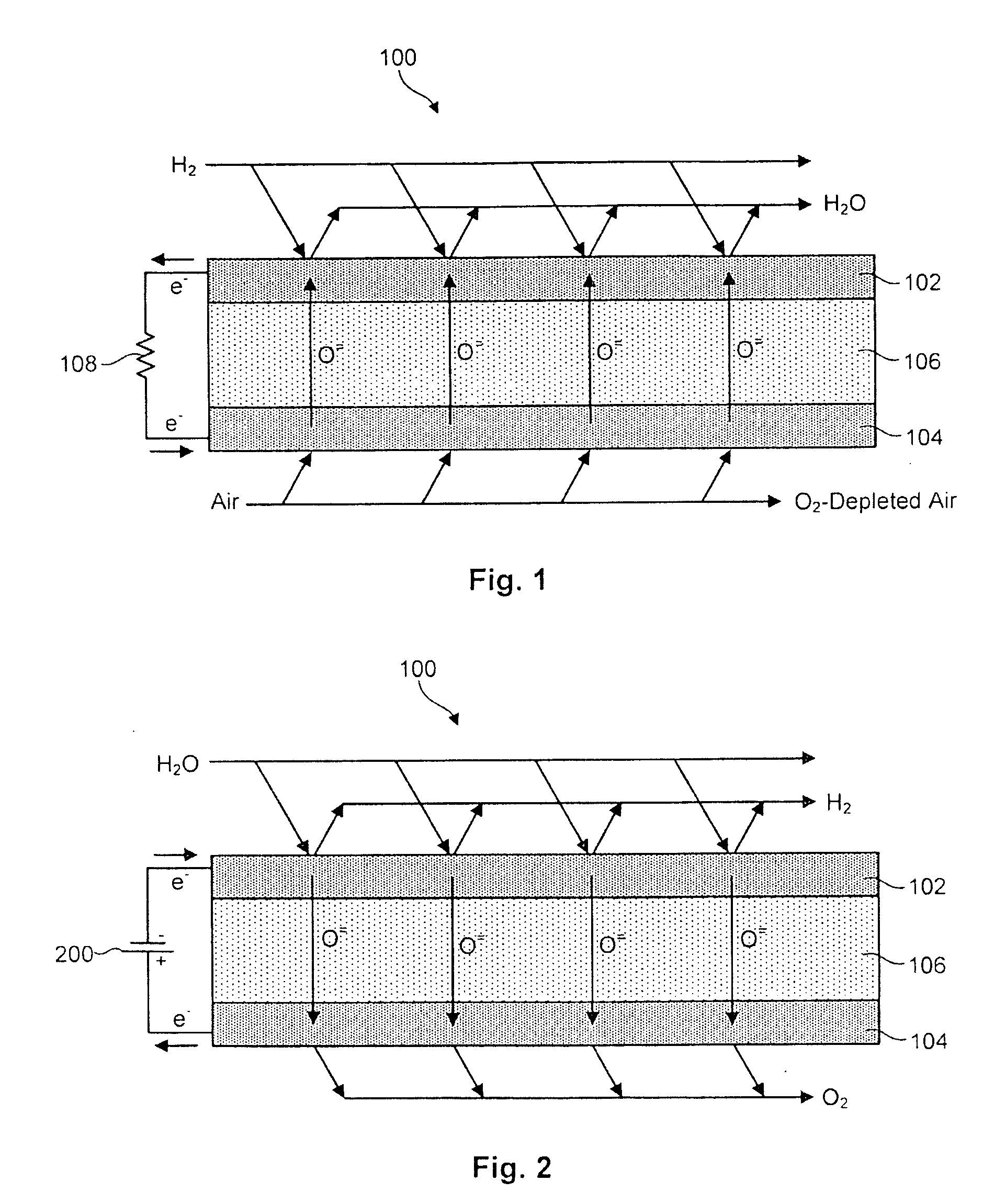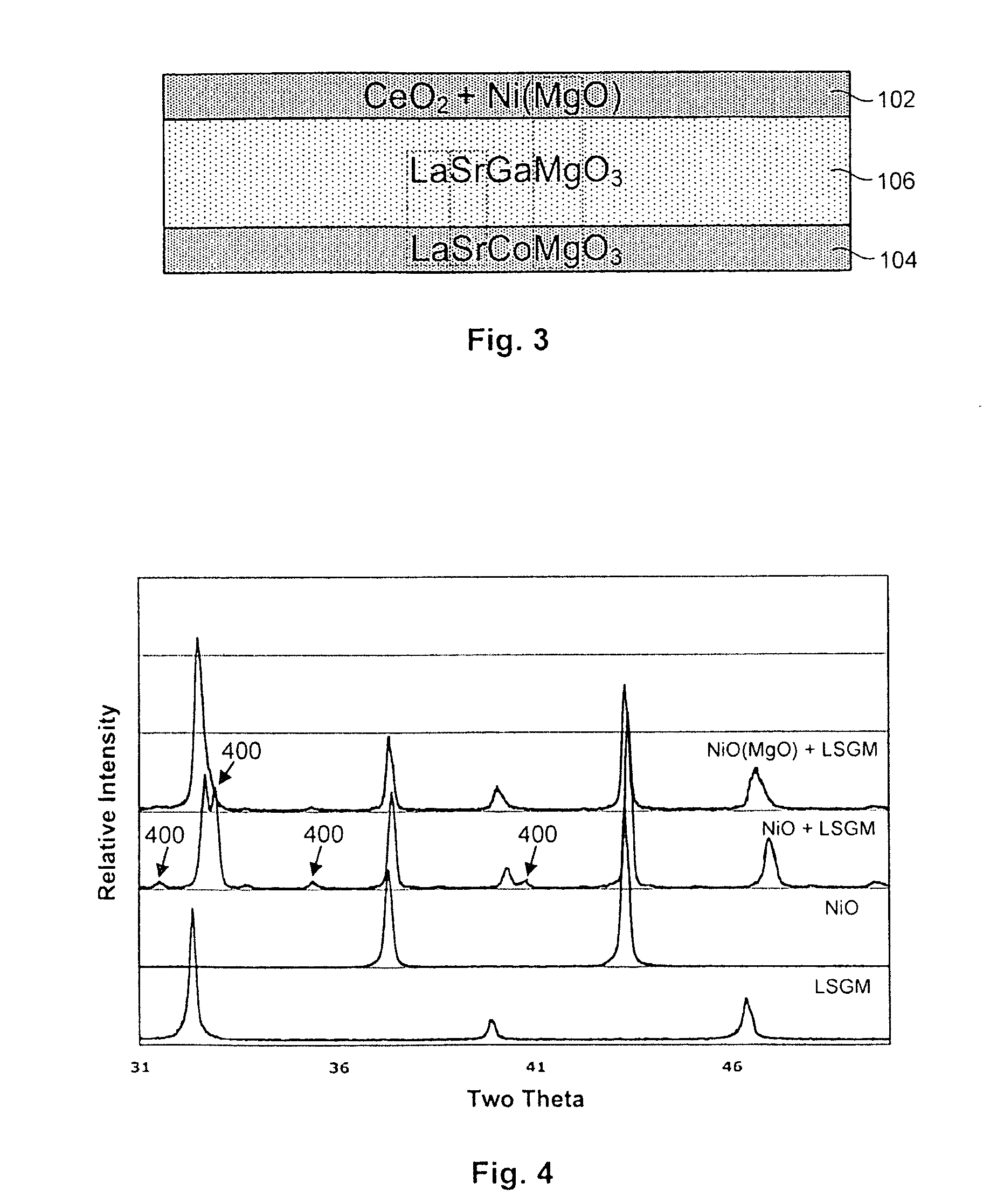Electrodes for Lanthanum Gallate Electrolyte-Based Electrochemical Systems
a technology of electrochemical cells and lanthanum gallate, which is applied in the field of electrochemical cells, can solve the problems of reducing operating temperatures below 800° c., the incompatibility of nickel-based anodes with lsgm electrolytes is well known, and the development of anode materials and cell fabrication processes still needs to be addressed, so as to reduce the reactivity of nickel
- Summary
- Abstract
- Description
- Claims
- Application Information
AI Technical Summary
Benefits of technology
Problems solved by technology
Method used
Image
Examples
Embodiment Construction
[0030]It will be readily understood that the components of the present invention, as generally described and illustrated in the Figures herein, could be arranged and designed in a wide variety of different configurations. Thus, the following more detailed description of the embodiments of the invention, as represented in the Figures, is not intended to limit the scope of the invention, as claimed, but is merely representative of certain examples of presently contemplated embodiments in accordance with the invention. The presently described embodiments will be best understood by reference to the drawings, wherein like parts are designated by like numerals throughout.
[0031]Referring to FIGS. 1 and 2, in selected embodiments, a solid oxide electrochemical cell 100 in accordance with the invention may include a hydrogen electrode 102, an oxygen electrode 104, and an electrolyte layer 106. Each of the layers 102, 104, 106 may, in certain embodiments, be composed of solid-state materials....
PUM
| Property | Measurement | Unit |
|---|---|---|
| temperature | aaaaa | aaaaa |
| operating temperatures | aaaaa | aaaaa |
| electrical conductivity | aaaaa | aaaaa |
Abstract
Description
Claims
Application Information
 Login to View More
Login to View More - R&D
- Intellectual Property
- Life Sciences
- Materials
- Tech Scout
- Unparalleled Data Quality
- Higher Quality Content
- 60% Fewer Hallucinations
Browse by: Latest US Patents, China's latest patents, Technical Efficacy Thesaurus, Application Domain, Technology Topic, Popular Technical Reports.
© 2025 PatSnap. All rights reserved.Legal|Privacy policy|Modern Slavery Act Transparency Statement|Sitemap|About US| Contact US: help@patsnap.com



